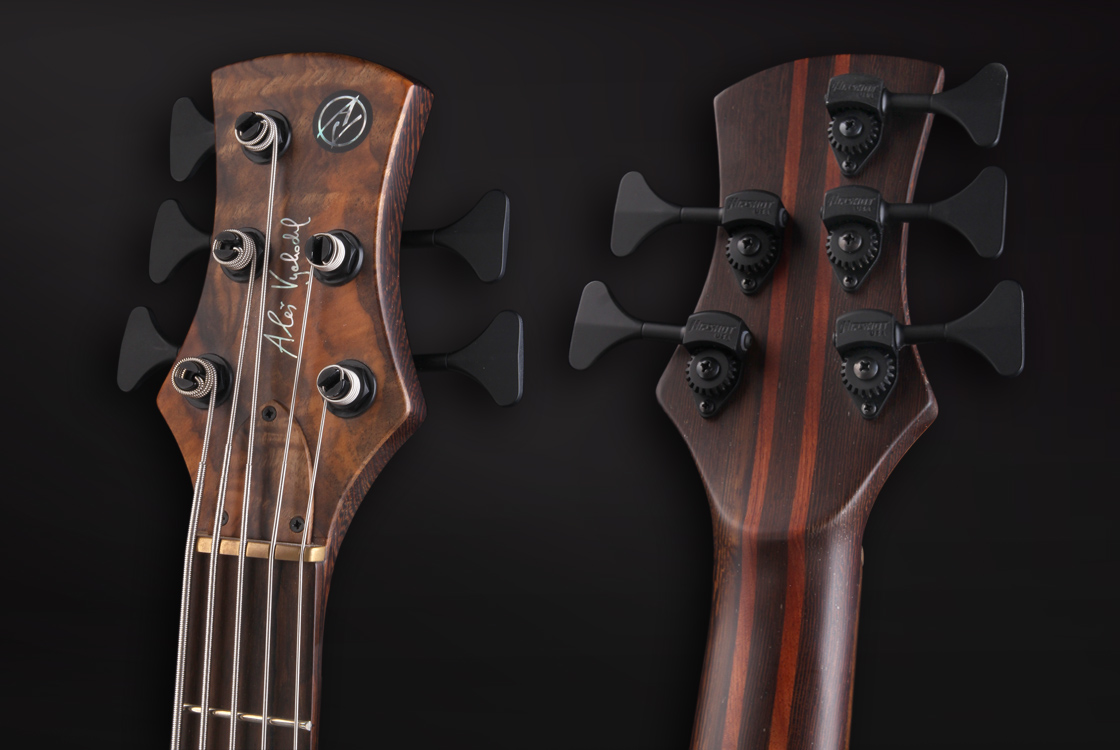Construction of AV Basses
The AV Basses instruments are available in these scales: "32, "34, "35 and "36 inches and multiscale, that is instruments with changing scale due to fanned frets.
The structure of the instrument can basically fall into one of the two categories: with bolt on neck or neck through body (or glued in neck).
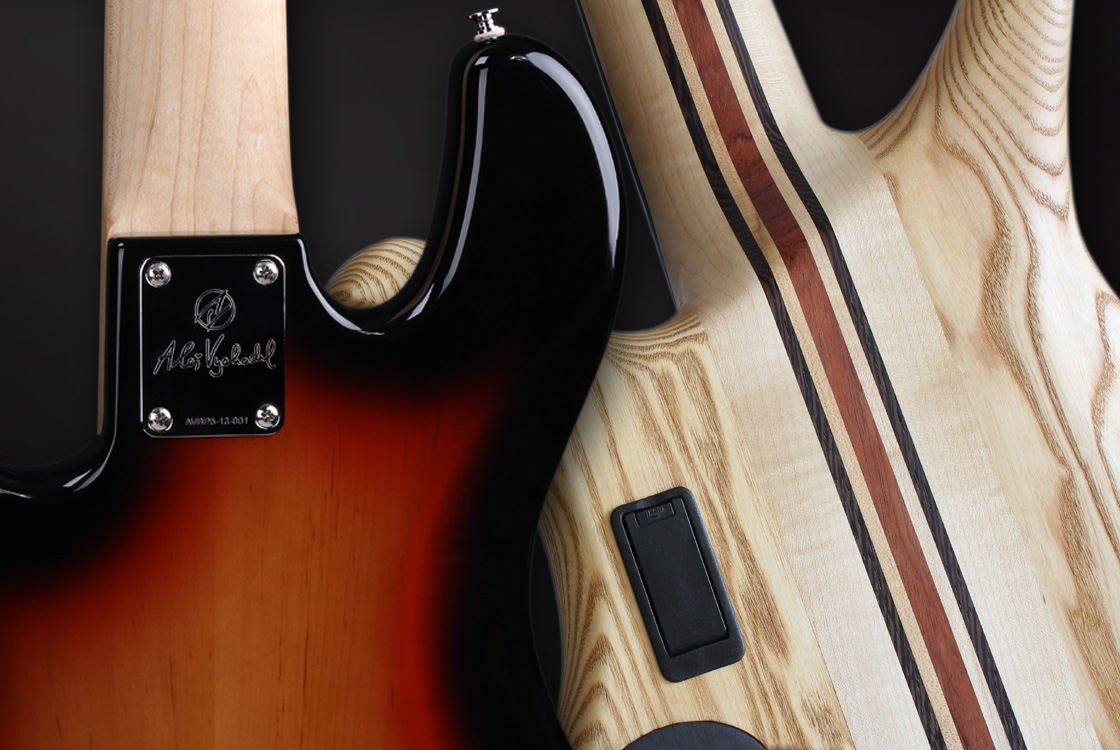
Both of these methods for constructing an instrument have their own advantages and disadvantages. A neck-through instrument has higher demands on construction and materials. Selecting how the neck is attached to the bass is a fundamental decision when choosing the right instrument.
These are the two basic methods of attaching the neck to the body and they can, of course, be further modified. Bolt-on-necks can also be glued or set into the body which would be a compromise between the two ways. The neck could be the body of the instrument (it is then called a deep set neck), and still it could be secured by bolts.
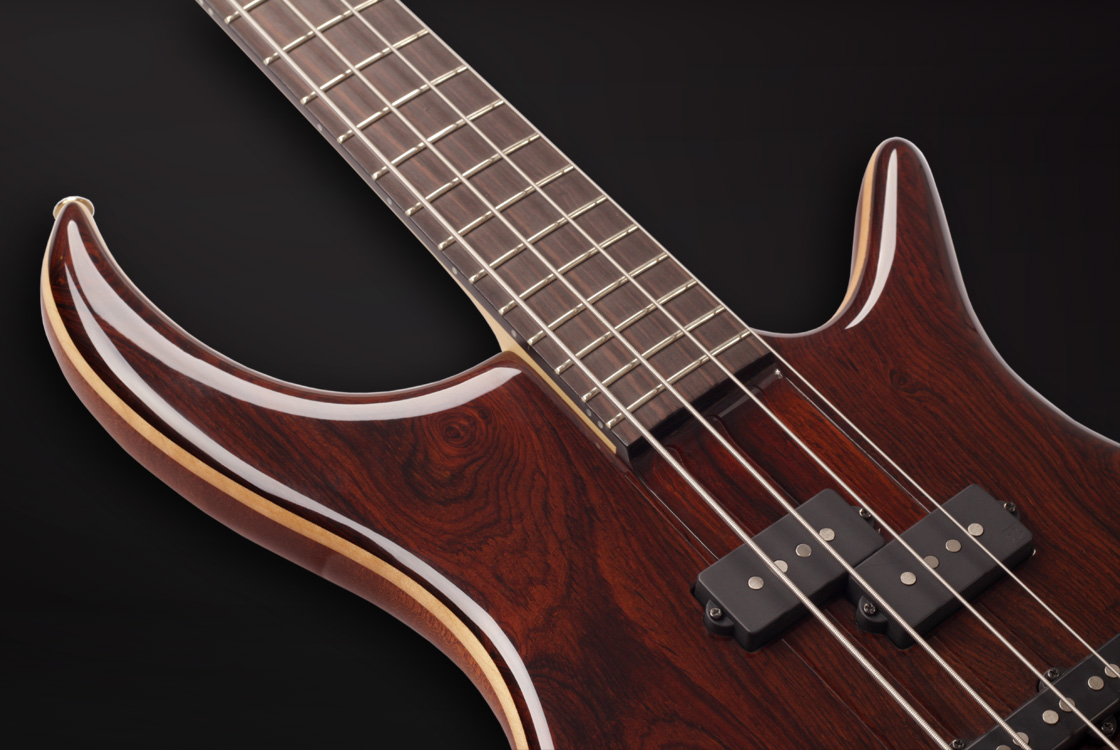
In this way, a really comfortable access all the way to the to higher positions at end of the frettboard can be achieved. In terms of access to higher positions, the attachment is then similar to the neck-through-body instruments.
A neck with bolts can be attached to the instrument body using four to six (or even more) bolts.
Sustain is of good quality, but a neck-through instrument has a longer sustain and more spread out sound. We can discuss the quicker onset of sound in bolt-on-neck instruments.
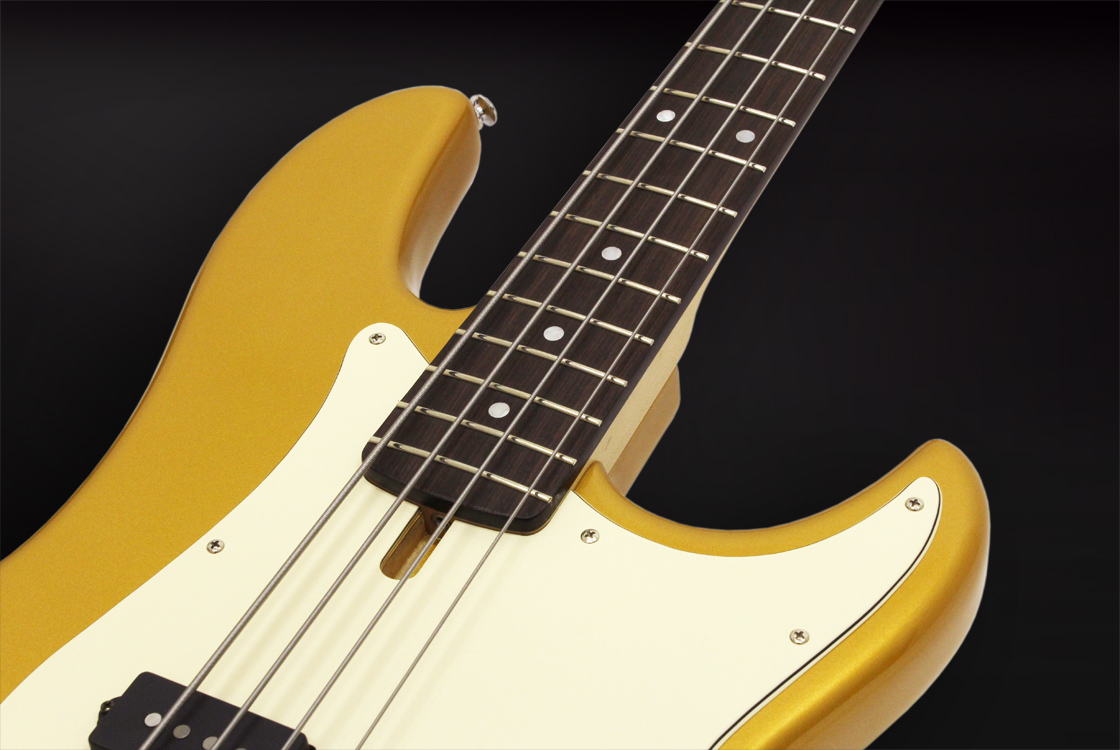
A neck-through instrument has higher demands on construction and materials. Neck through body can be utilized especially in fretless basses.
The neck-through-body can also be directly glued to the sides of the body. In this way the neck remains visible and adds visual appeal to the instrument, as it goes through the whole instrument.
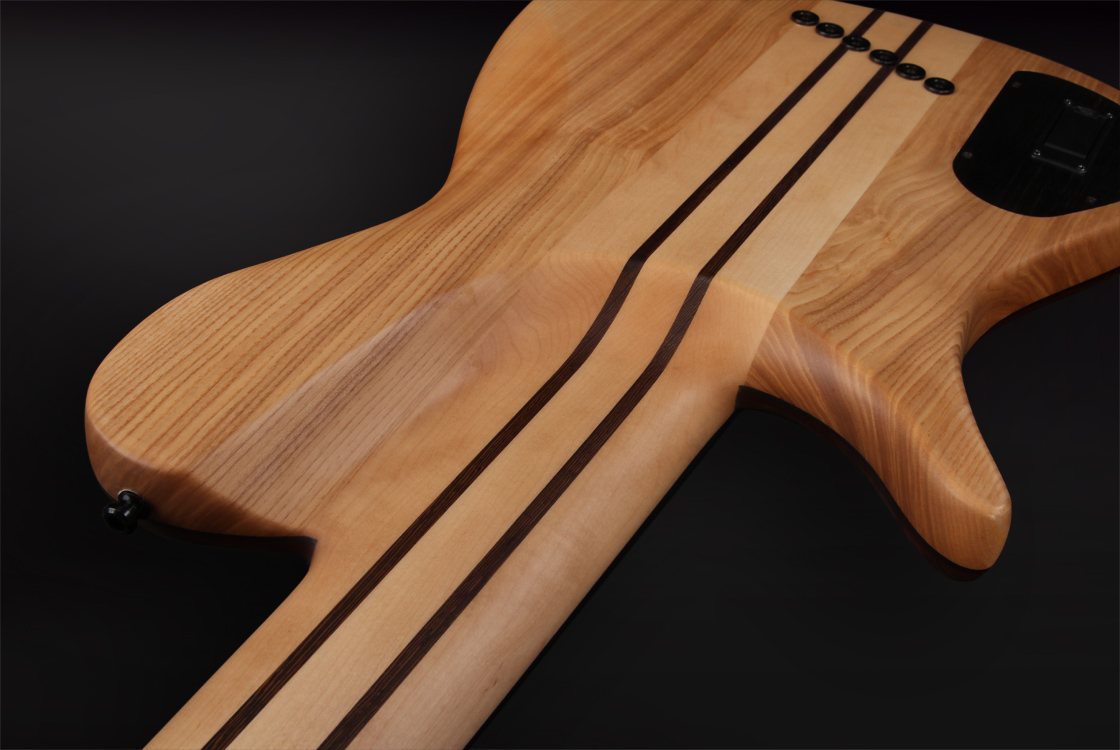
For example, a compact assembly can be created using a neck composed of seven parts along with a top board and a back board.
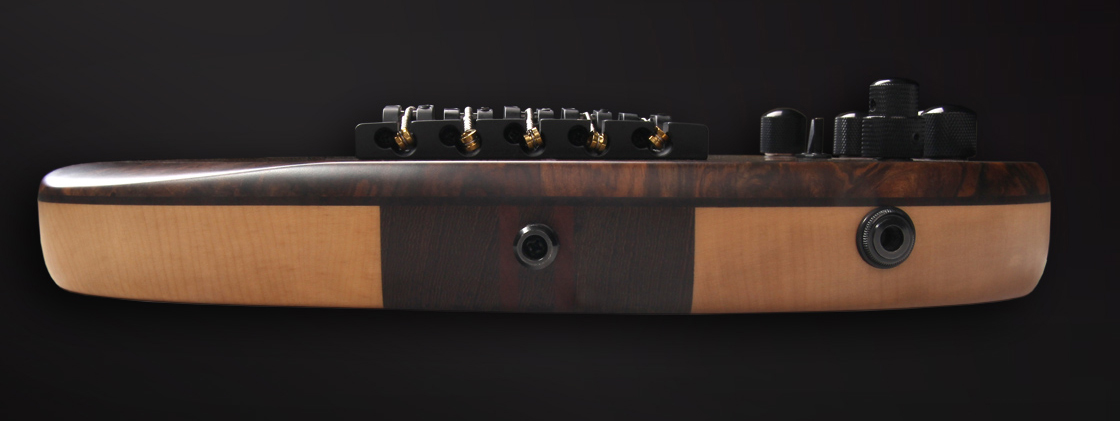
We can produce an instrument with high total strength, which also influences the definition of the instrument’s sound.
Each type of wood in the total lamination leaves its trace on the final sound of the instrument.
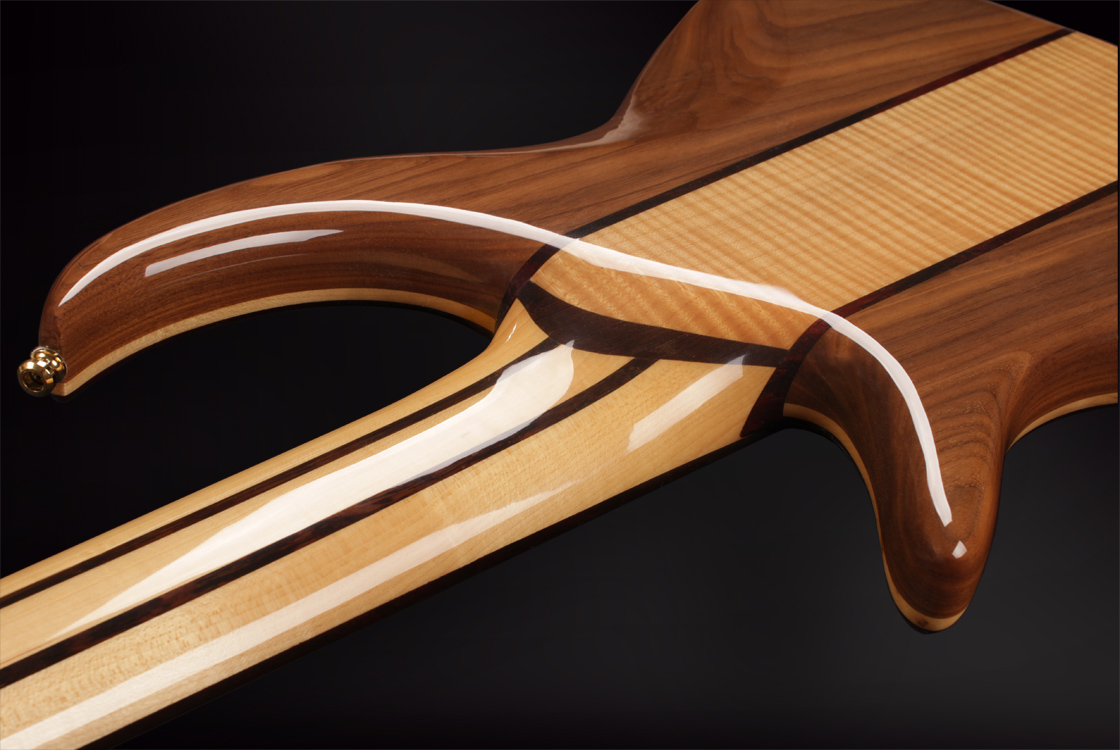
As a matter of course, we add a headstock plate made of wood matching with the instrument body.
